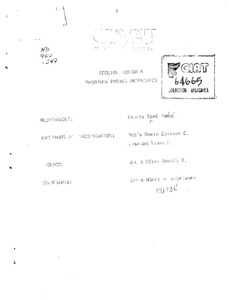Mission
To reduce hunger and poverty, and improve human nutrition in the tropics through research aimed at increasing the eco-efficiency of agriculture.
People
CIAT’s staff includes about 200 scientists. Supported by a wide array of donors, the Center collaborates with hundreds of partners to conduct high-quality research and translate the results into development impact. A Board of Trustees provides oversight of CIAT’s research and financial management.
Values
- Shared organizational ethic
- We respect each other, our partners, and the people who benefit from our work. We act with honesty, integrity, transparency, and environmental responsibility in all of our joint endeavors.
- Learning through partnerships
- We work efficiently and pragmatically together and with partners. Considering our diversity to be a key asset, we adapt readily to change and strive to improve our performance through continuous learning.
- Innovation for impact
- We develop innovative solutions to important challenges in tropical agriculture, resulting in major benefits for the people who support, participate in, and profit from our work.
Members:
Resources
Displaying 831 - 835 of 958Brasil 1: Estudio biológico y técnico
Brasil 2: Análisis económico
Utilizacion de la tierra e importancia de la yuca en la finca DRI en los Departamentos de Atlantico, Bolivar, Cordoba y Sucre
The results of a survey conducted in 1983 among 416 farmers participating in the integrated rural development project (DRI, Colombia) in Atlantico (60), Bolivar (66), Cordoba (156), and Sucre (134), on land use and importance of cassava within the farming system, are presented. Except for Bolivar, where cassava and yam plantings decreased, increased land use attributable to increased credit availability was observed. In general, 1.7 ha cassava was planted per farm in 1982-83, mainly in association with yam, maize, and plantains; 55 percent of the land planted included cassava.




